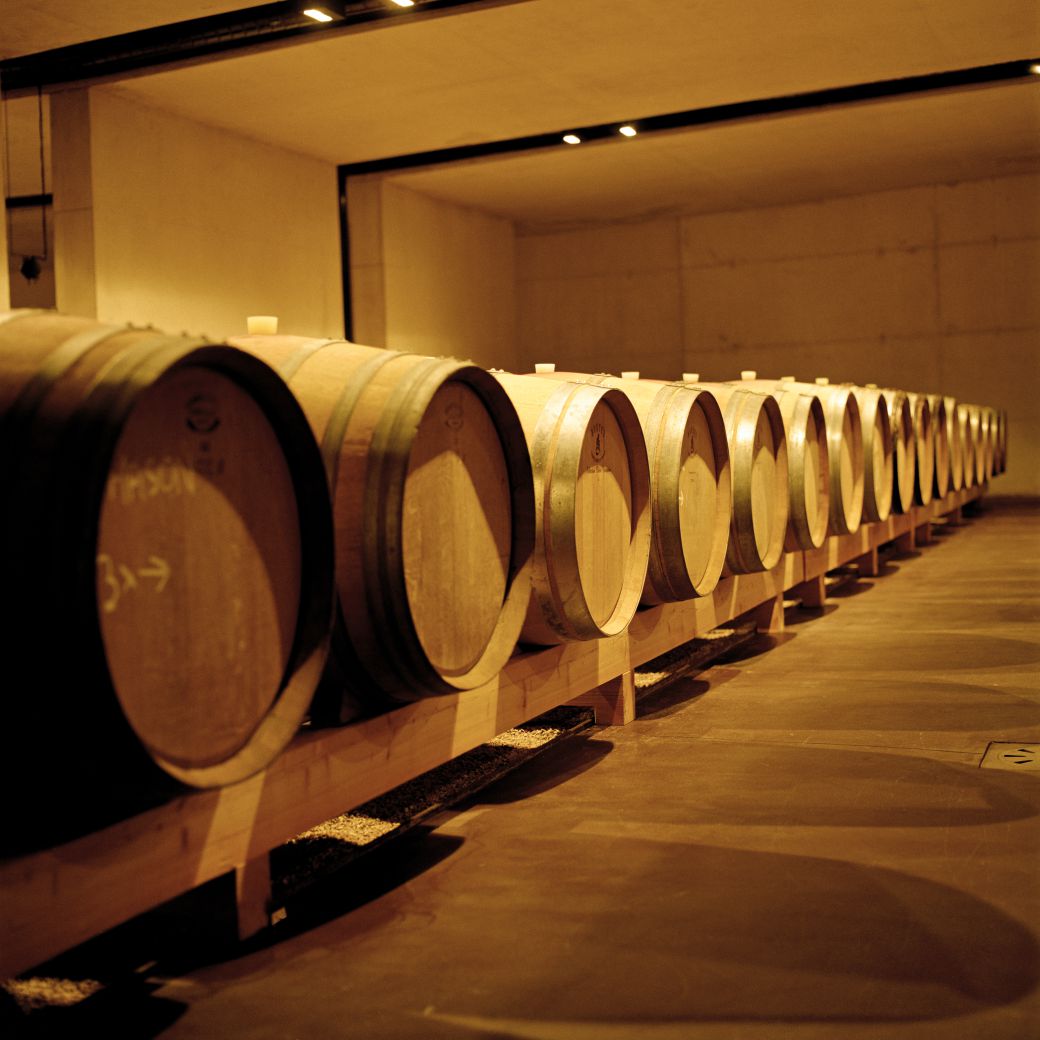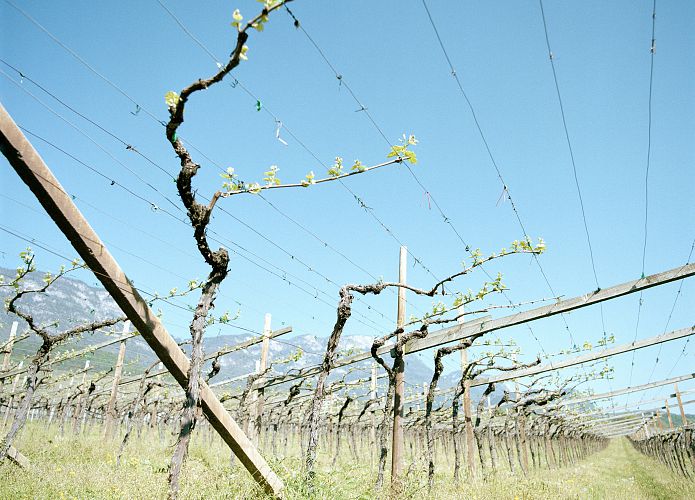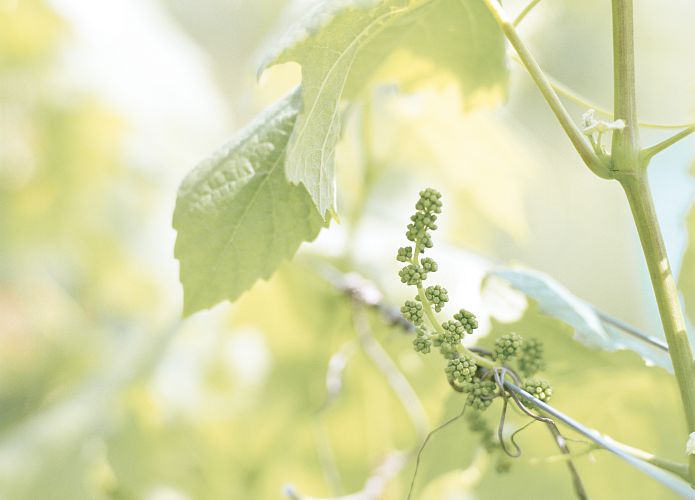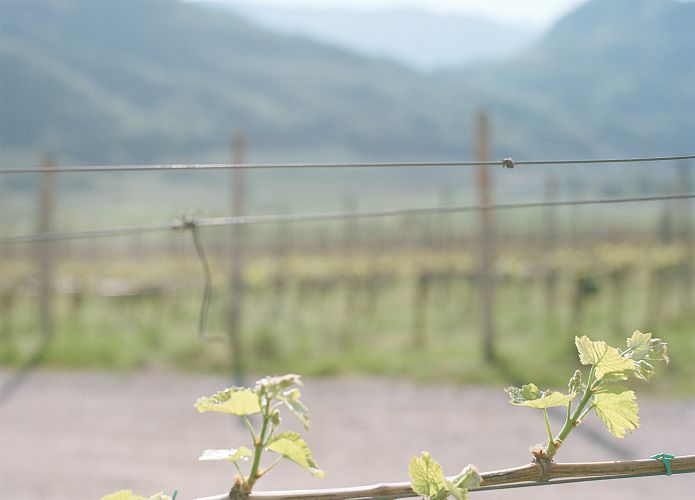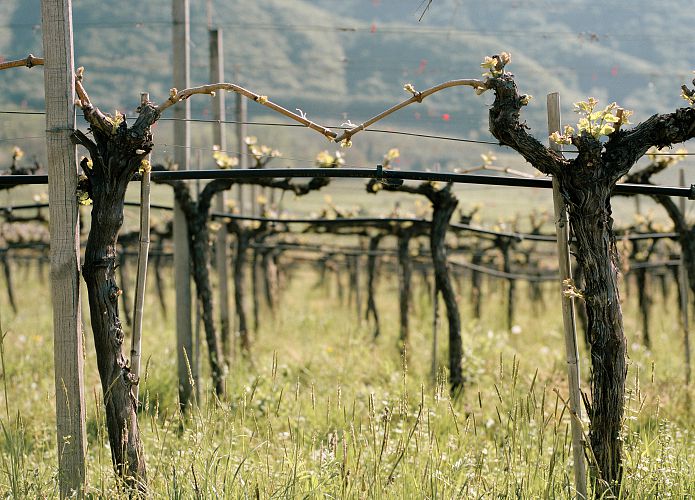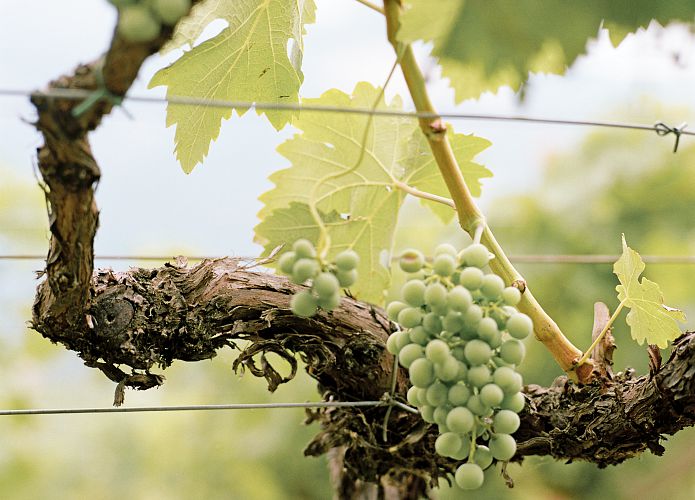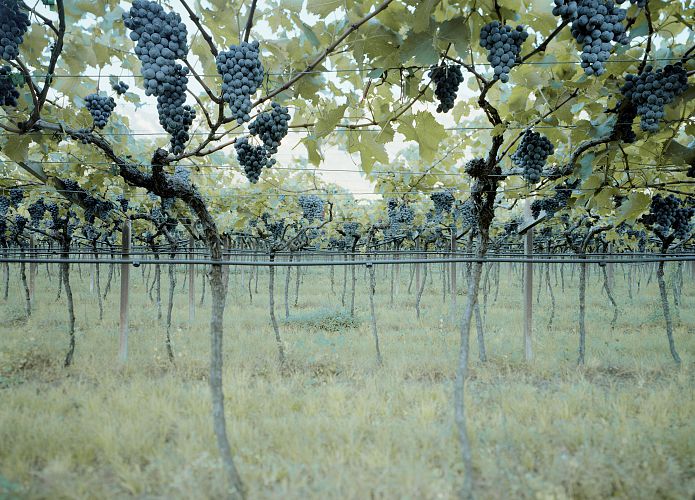Vitis vinifera ssp. vinifera: The mother of our good wines
The cultivated grape vine is at the heart of our world in Manincor. It embodies the maternal principle: giving, supporting, nurturing, nourishing, caring, saving. When its work is done, the vine retreats into the background, leaving its children in the limelight. It acts as a mediator between the soil, the air and the fruit, patiently and creatively extracting everything the grapes need. Then it withdraws, rests, gathers its strength, transforms itself, lets juices rise and sheds tears of the vine in spring, before giving birth to new life: delicate, lustrous pale-green leaves. With increasing hours of sunshine, the strong leaves are followed by the flowers and then the grapes. It is a veritable feat of strength that the grapevine performs: grayish brown, woody and inconspicuous in winter, and laden with grape clusters in summer – sensual, luscious, vibrant with life, a veritable gift!
Helmuth Zozin, Director of the Manincor Wine Estate and intimately familiar with our vines, considers their biology, ethereal processes and our definition of old vines.
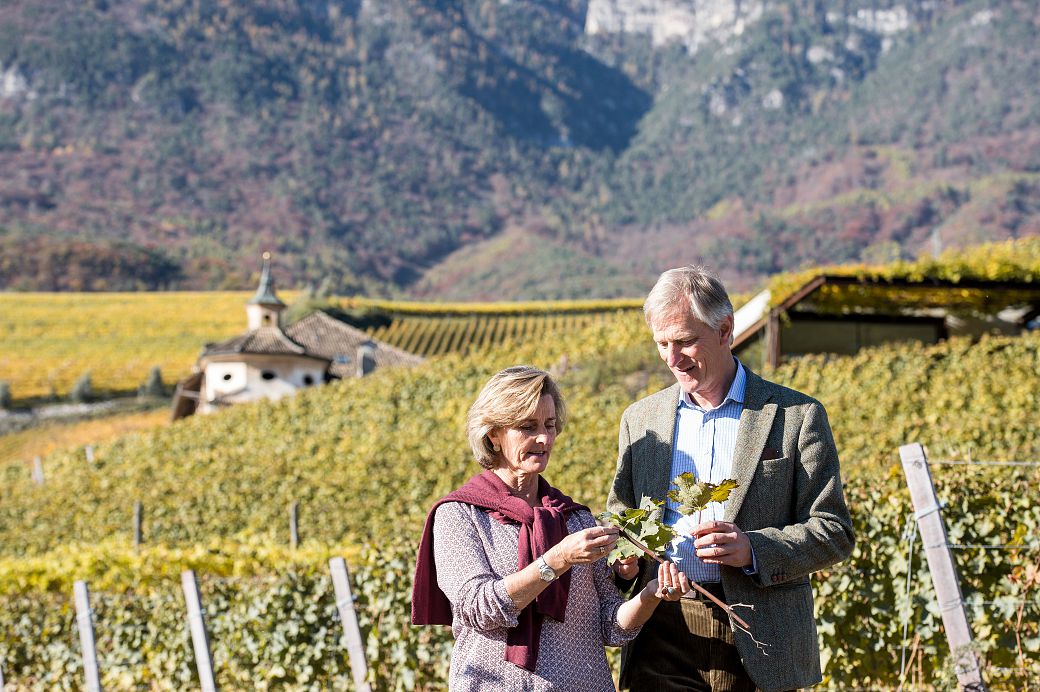
A great wine is a wine of character and the highest quality, one that relates distinctively to its terroir. It is the essence of the perfectly ripe fruit and reflects the interplay of vine, soil, climate, vintage, husbandry and the personality of the winemaker.
The vine is our primary partner in the pursuit of quality; it is the tangible sensual expression of individuality in the vineyard.
Strong and vigorous, balanced and at one with themselves, this is how the vines in Manincor should be. That is almost squaring the circle and thus our greatest challenge!
The roots should go down deep into the ground in order to withstand long periods of dry weather. At the same time, growth should not be excessive; the berries and clusters should remain small.
Head in the ground
The head of the plant is in the roots, and the roots anchor it in the ground. Since the phylloxera epidemic at the end of the 19th century, our old cultivated European vines have been grafted onto American rootstock that do not attract the phylloxera aphid in order to obtain plants that are resistant.
Such rootstock grafted vines are less robust than own-root vines. All the more important, then, that the roots should be strong and surrounded by living soil.
Underground cooperation
By “strong” we mean roots that are multi-branched and deep, while “living” means rich in humus and varied soil life. The living vineyard soil is home to billions of microorganisms representing thousands of different species. They form a symbiotic relationship with the roots of the plants and provide them with mineral nutrients in exchange for carbohydrates.
It is a complex network of organic interaction that strengthens all participants. It enables the vines to organize an efficient supply of nutrients – a prerequisite for resistance and long life.
Ethereal effects
Integrated into such a healthy ecosystem, the Manincor vines respond particularly well to biodynamic preparations. A holistic interplay of the forces of nature is necessary for the ethereal effects of biodynamic methods of cultivation to develop.
Biodynamic preparations stimulate harmonious growth. Compost preparations, for example, act via the humus of the soil on the symbiotic relationship between the roots of the vines and the organisms in the soil.
When vines meditate
Horn manure and horn silica, the two most important preparations in biodynamic cultivation, have a harmonizing effect on the basic mechanisms of life – comparable to meditation in human beings. Meditation helps you find your natural balance and true center, Similarly, the dynamic preparations that we spray act on the forces of growth in the vines and restore them to harmony.
Life cycles of the vines
Growth and maturity need to be present in the right proportions. They are both equally important, each to the appropriate extent and at the right time.
In the rhythm of the year and under the influence of the forces of the moon and the planets, the vines pass from growth in spring to ripening in autumn. The more continuous the transitions, the more robust the immune system of our vines and the better the ripening process.
Old but good
The age of the vines is a factor in terms of quality. Old vines cope better with the various challenges of the wine-growing year. They survive dry periods without showing symptoms of stress and do not burst into exuberant growth during continuous wet weather. With their deep roots and substantial old wood, they are able to compensate for extremes and maintain their rhythm. This makes them less sensitive and, although they produce less, the quality is better.
When is a vine old?
When can vines be considered old? Many factors play a role, including the overall condition of the vineyard. Vitality and harmony must be in balance. Without the one, the other is not worth much.
At Manincor, we know that vines can start to exhibit the characteristics of old vines when they are 25 years old provided they receive optimum care, but in most cases they will be 30 years old or more.
Ripe old age
When the vines are 25 to 30 years old and really deep-rooted, the vineyard is just starting to reach its prime. From year to year, growth and ripening become more regular and stable.
Such healthy vines can produce grapes of splendid quality up to the age of a hundred. The yield will steadily decrease from an initial one and a half kilos per vine to just under half a kilo, but the unique delights of such a noble wine are ample compensation. Wines from such vineyards are not simply good in the conventional sense; in terms of taste they embody the individual character of their world: the interaction of vine and soil, the climate, the flora and fauna, the vintage and the winegrower.
Our vineyards are now coming into their prime. The vines used for our exclusive Crown line are 30 years old and more, while the sites that deliver the grapes for our Heart wines are over 20 years old. Hardly any of our vineyards are less than 10 years old.
We are doing everything possible to ensure that these vineyards will serve us for many decades to come and will reward us with more and more great wines.
Carefree childhood for our vines
For vines to retain their vitality in old age, painstaking care is needed in every respect. The first years in particular are formative. Only if yield is sacrificed in the first three years and then built up slowly, will root growth be sufficiently stimulated to lay the foundations for vitality in old age.
Pruning is equally important. We are very careful to avoid large cut surfaces so as to minimize points of entry for parasites and pests.
Vitality as the magic word
Many little steps are involved in promoting and maintaining vitality. For us humans, moderate eating habits and a balanced diet, adequate exercise and a rhythmic lifestyle with sufficient time for rest and relaxation form the basis for long years of good health. Long-term health in the vines presupposes deep rooting over the years in living soil, biodiversity in and around the vineyard, minimized cuts and wounds, and moderate yields.
Individual vine care
The road to quality is even more complex, however, because a vineyard is not a single organism but consists of thousands of individual vines. About 6,000 vines grow on one hectare, which makes a total of about 270,000 at Manincor.
Every single vine needs individual care. Pruning depends on its state of growth and development, as does the number of shoots and clusters. When harvested, all the grapes should be excellent in taste.
Added to this are imponderables such as the winds and the weather. In this complex setting, the great challenge is to ensure that the vineyards are in the desired state of homogeneity at the time of the harvest.
Mature grapes
The goal of all these efforts is physiologically ripe fruit, with all the constituents in perfect balance. Ripe means no longer green and not yet overripe. Not even the most sophisticated analysis, only tasting can determine the optimum time for harvesting.
Perfection in the vineyard
… does not exist. During the harvest we have to meticulously remove every grape that does not meet our expectations. In the best years we only have to pick out one or two grapes. In difficult years, following adverse weather conditions or even hailstorms, ten or more grapes may have to be plucked from every cluster. That means a drastic increase in the time spent on the harvest, and there are years when a picker cannot manage more than 100 kilos a day.
Conclusion
We want our wines to be more than good; we want them to embody the distinctive taste of Manincor. To achieve that goal, the vines must receive our undivided attention and continuous care.
